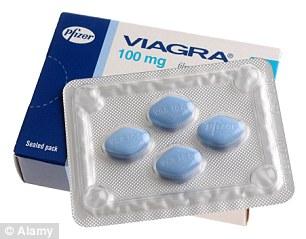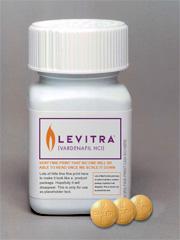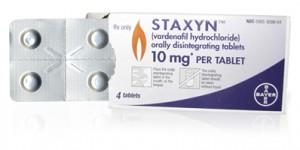Oral Agents (Pills)
Cialis (Tadalafil), Levitra (Vardenafil), Staxyn (Vardenafil), Stendra (Avanafil), Viagra (Sildenafil)
Although Viagra® was the first oral agent with proven benefit in the treatment of erectile dysfunction, nowadays we have more oral products which differ in time to achieve an erection, effects of food intake on activity, and daily or on demand use. This gives physician and patient more flexibility in choosing the best type of medication and dose to suit individual needs of patient. Early media coverage generated worldwide demand for medications for erection and brought sexual dysfunction into main stay media coverage and layman language. All available medications are effective and safe first line medication. What every physician and patient should know about the drugs follows.




Avanafil (Stendra), Sildenafil (Viagra), Tadalafil (Cialis) and Vardenafil (Levitra, Staxyn) are called inhibitors of phosphodiesterase type 5 (PDE5-I) and they all work by the same mechanism. Viagra® was the first oral agent with proven benefit in the treatment of erectile dysfunction. Nowadays there are several oral products which differ in time to achieve erection, effects of food intake on activity, and daily or on demand use. This gives physicians and patients more flexibility in choosing the best type of medication to suit individual needs.
The advantage of medications in this group is the simplicity of their use. Medications in this group help promote the development and maintenance of an erection. Stimulation is required for these medications to work. It is important to note that these medications do not affect sex drive nor libido. Treatment with any of PDE5 inhibitors allows approximately 65% of men to resume sexual intercourse. Headache, flushing, transient visual disturbances, back pain, and dyspepsia are the most common side effects.
Tadalafil can be taken on demand – before sexual activity – at dose of 10 or 20 mg or it is approved for daily use of 5 mg. This is especially useful in younger men who may not necessarily plan the sexual activity with the same ease as married men or men in long-term relationships.
Treatment with any of PDE5 inhibitors allows approximately 65% of men to resume sexual intercourse. All medications in this group have been shown to be effective across a wide spectrum of medical conditions, although it is least effective in certain diabetics and early after radical prostatectomy. Headache, flushing, transient visual disturbances and dyspepsia are the most common side effects occurring in 6-18% of men using Viagra and Levitra. Headache and backache are common side effects in men using Cialis.
The benefit of PDE5 inhibitors in men with angina or a history of heart attacks who have ED who are NOT taking nitrates has been shown to be similar to men without these conditions. From a safety standpoint, in carefully selected patients there is no evidence to show that use of PDE5 inhibitors are associated with heart attacks or an increased incidence of death. The overall incidence of cardiac side effects is approximately 5% for those with a history or compared to 3% in men without coronary artery disease. Prior to sexual activities men should be evaluated and stratified into 3 different risk category using Princeton III consensus conference criteria.
PDE5 inhibitors should not be used by certain patients: patients who are on any form of nitrate therapy (pill, spray, paste, or patch) as the combination of the 2 drugs has been shown to lower the blood pressure to a dangerous level. Men with significant cardiac disease are at higher risk of problems. These patients include: heart attack within the last 3 months; poorly controlled high blood pressure; poorly controlled angina (cardiac chest pain); stroke within the last 3 months; severe congestive heart failure; and heart valve disease. There is a group of men with cardiovascular disease who may benefit from a cardiologist's input prior to starting PDE5 inhibitors and these include: men with moderate angina; mild congestive heart failure; heart attack or stroke in the recent past (more than 3 months less than 6 months ago).
The advantage of medications in this group is the simplicity of their use. Patients who are not successful are asked to return to consider alternative forms of therapy.
Trazodone
Trazodone is an anti-depressant with the uncommon side-effect of prolonged erection (priapism). This occurs in approximately 1/10,000-20,000 users. It has been used for the treatment of erectile dysfunction without any clear evidence that it is truly effective. Its mechanism of action in promoting erection is not well known, but it is believed that it exerts its primary effect by stimulation of the serotonin receptors in the brain. The medication has been used at the dose of 50-200 mg by mouth each night at bed time (no relationship to intercourse timing). While some studies have cited trazodone’s effectiveness to be as high as 60%, the arrival of Viagra has decreased the use of this medication significantly. The side effects of trazodone include drowsiness in 31%, dry mouth in 1% and fatigue in 19%.
Yohimbine
This drug is derived from a tree bark and acts on receptors in the brain to stimulate area that are believed to be involved in sexual function. It has been used for many years, however, there is no good evidence to show that this drug is any better than placebo (sugar pill). Currently, its role as therapy in men with erectile dysfunction is minimal. It is associated with potentially serious side effects such as palpitations and high blood pressure, especially in patients with cardiovascular disease. Yohimbine can cause panic attacks in some patients and should only be taken in the morning.
Intraurethral Agents (Suppositories)
Alprostadil (MUSE™)
Intra-urethral administration of alprostadil suppository (MUSE™, Vivus, Menlo Park, CA, USA) induces an erection sufficient for sexual intercourse in 30-40% of men. A pellet, the size of a grain of rice, is placed 1 inch into the urine channel following urination while the patient is standing. The reported side effects include pain and dizziness, albeit in less than 5% and 2% of men respectively.
Penile Injections
Virag and Brindley were the first authors to report the ability of penile injection to produce an erection, using papaverine and phenoxybenzamine, respectively. To date, a number of medications have been used for this purpose, most commonly papaverine, phentolamine and alprostadil. These medications have been administered in a variety of combinations with good effect. The success rate, defined by the production of an erection rigid enough for intercourse, has been in excess of 75%.
Injection therapy represents a cornerstone of ED therapy and remains the gold standard for medical therapy. To date, a number of medications have been used for this purpose, most commonly papaverine, phentolamine and alprostadil. These medications have been administered in a variety of combinations with good effect. The success rate, defined by the production of an erection rigid enough for intercourse, has been in excess of 75%. Disadvantages include more complex route of administration, potential for bleeding, bruising, and penile fibrosis, and a higher incidence of priapism (albeit all uncommon side effects).
It is mandatory that the patient receive detailed instructions on the use of this type of therapy and is administered his first dose in the clinic. In our clinic, each visit is an important combination of physician assessment, trial dose administration, and patient education. The patient is given instructions on cleaning the phallus. An alcohol swab is used to cleanse the intended area of injection. An insulin type syringe is then used to administer the medication. The injection is given at the ten or two o’clock position on the penis (away from the ventrally located urethra), away from visible veins, and never in the midline. To minimize the chance of scar formation, the sight is changed with each dose. The needle is aimed at a right angle to the skin and pushed into the hub, ensuring delivery of the medication to the correct location. After administration of the medication, the patient holds direct pressure to the area of injection for a few minutes. Patients taking blood thinners are advised to continue pressure for 6 minutes. The staff gives the first dose with the patient watching. This is a very low dose (which varies depending on the choice of drug). Patients with pure nerve damage ED are started lower than those with suspected vascular ED. After administration and assessment of erectile response 5, 10, and 30 minutes later, the patient waits in the clinic until the erection goes away. With each visit the dose of medication is increased. The patient’s role in administration of the medication also progressively increases. The dosage goal is to produce an in-clinic erection of 60% maximum (barely adequate for penetration) that lasts less than one hour. It is presumed that at home with less anxiety, more appropriate stimulation, etc., the effect will be greater. Ultimately, the patient (or his partner) must also demonstrate the ability to draw up the drug and properly inject it with an aseptic technique without staff assistance. At this point, he is graduated from the clinic and given prescriptions for at-home use. As with all forms of medical therapy, the patient is given instructions to seek prompt medical attention for prolonged erections.
The potential side effects of scarring, priapism (see page on Priapism on this website), bleeding, bruising, can be thus minimized by using combination medications, carefully titrating to the correct dose in the clinic, and thoroughly educating the patient on injection technique. Scarring can occur as a nodule, plaque, or penile curvature. Patients in our clinic are instructed that prolonged erections constitute a medical emergency. If the patient has an erection that lasts longer than two hours that is not relieved by ejaculation, they are instructed to call the answering service for advice and should be in the Emergency Department by the fourth hour.
Topical Administration (Creams and Gels)
The efficacy of topical creams and gels for treatment of erectile dysfunction is currently unknown. Further research is necessary in order to determine whether topical creams or gels would be an appropriate method to treat erectile dysfunction.
Simplified Approach to Drug Therapy for ED
ED is a common problem that affects men as they age. There are many effective forms of therapy available that should be offered to motivated patients. Consideration of the primary cause of ED is important in determining the likelihood of success with any given form of treatment. A history and physical examination are mandatory before the prescription of any form of erection-inducing medication. While the oral agents are currently the most popular first line medication, in patients who fail to respond to this agent, injection therapy should also be offered as second line therapy as it is easily the most effective treatment that exists. 5PDE inhibitors are absolutely contraindicated in patients who take nitrates of any kind but have proven to be safely used in combination with other blood pressure medications.

